Lockdown Lumen is a collaborative project by 12 artists in 8 different countries in various stages of COVID-19 lockdown. Using the medium of lumen, an alternative process which involves printing with sunlight, we explore themes of self-isolation and home-boundedness – both through the subject-matter (flowers from the garden, magpies by the kitchen-window…) and through the materials themselves (the prints were made using objects and light found in or around the home).
In its simplest form, lumen involves placing objects on photosensitive paper and exposing it to sunlight to create an image. The process is experimental, tactile and above all simple – requiring only sunlight, photographic paper (expired or fogged paper will also do) and optionally fixer. In a way, it’s the perfect GAS antidote.
For the previous six contributions – as well as a more detailed introduction to lumen printing and other alternative photographic processes – please see Part 1, which came out last week.
Celine Mcilmunn (Glasgow, Scotland)
My introduction to making lumen photographs came about by chance. In 1999 I was starting a fine art photography degree in Glasgow School of Art and I bought a large roll of Kodak Polymax paper thinking I would get a great deal of use from it. It turned out that I didn’t use the paper at all and it stayed at the back of a cupboard for many years. I found it again in 2017 and wondered if it was still usable. Perhaps I could give it to a student I knew? I had a look on the internet to see if it might still be usable and discovered the wonder that is lumen photography. I’m still working my way through that roll of paper as well as a selection of other papers I’ve picked up since then.
My initial experiments were mostly with flowers and other organic materials but since lock-down I’ve also begun to incorporate some man-made objects. I’ve also been making hand-drawn negatives using permanent markers on acetate.
This latest image is composed of some of these hand-drawn negatives, fruit netting and a piece of silk. The idea for the image came about following a heated discussion some friends were having on social media about magpies. I have been watching a pair that are nesting in a tree outside my kitchen window and have developed a great fondness and admiration for them. Unfortunately not everyone feels the same way and they seem to inspire superstition and extreme negative feelings in many people.
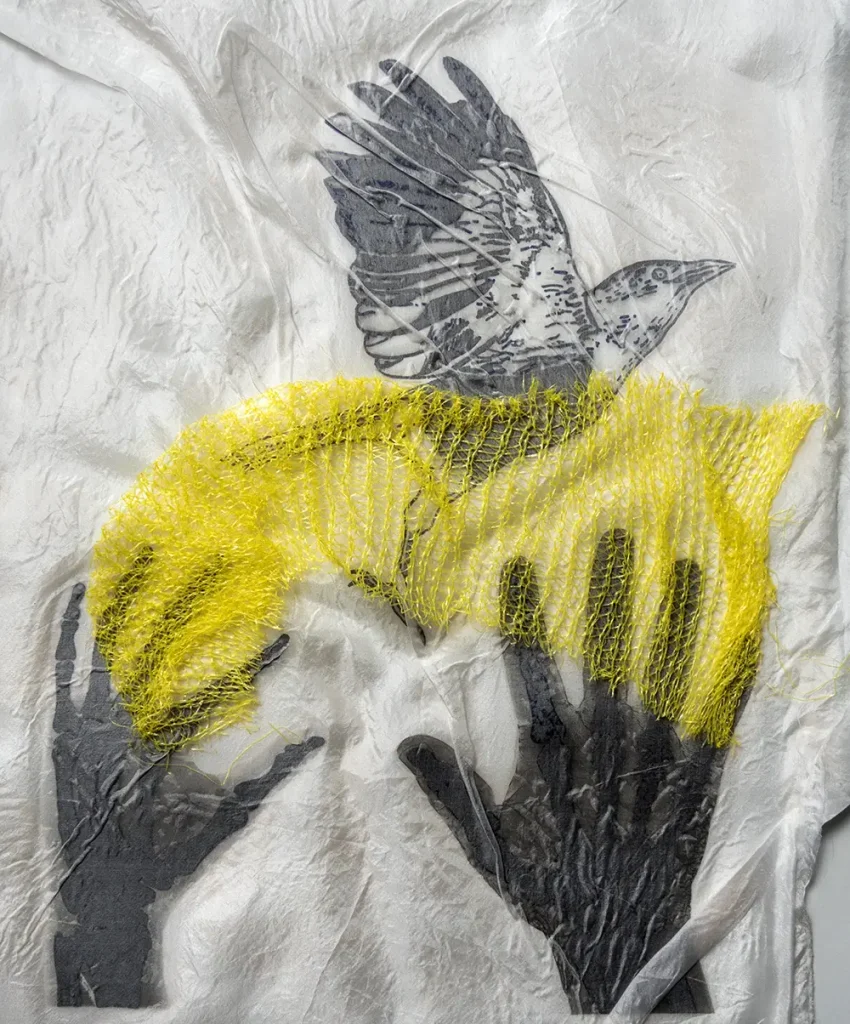
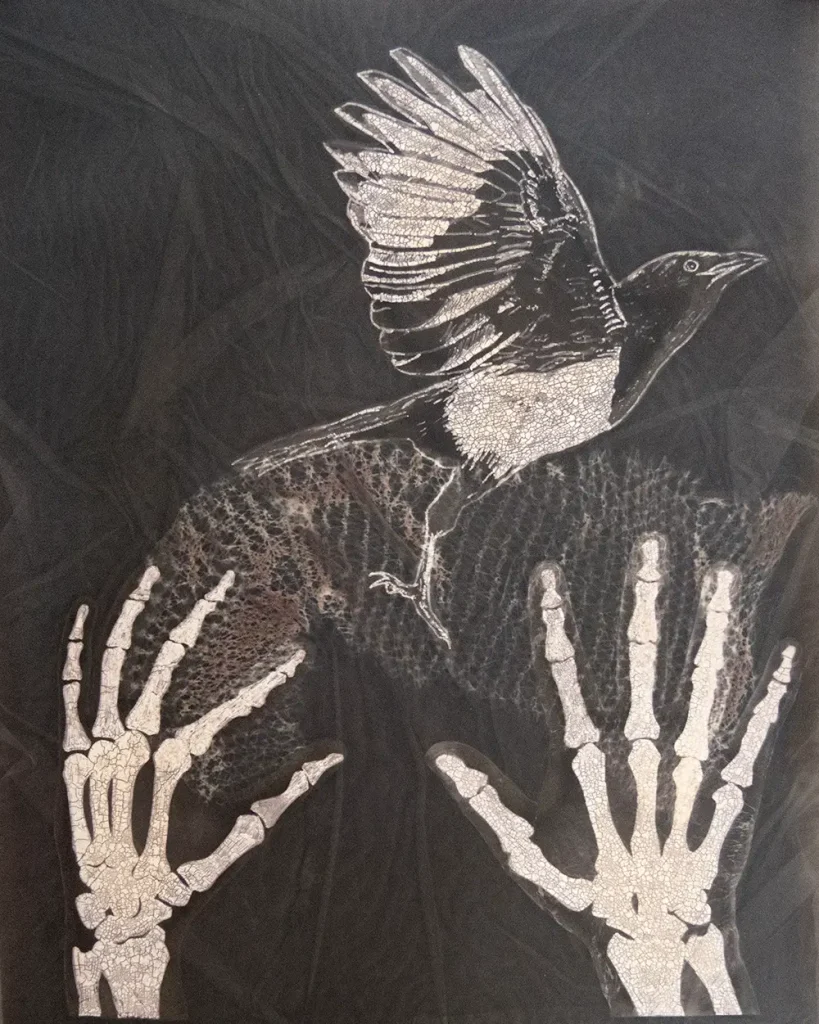
Links: Instagram
Maureen Mulhern-White (Connecticut, USA)
Born in England, I spent my early years in the UK before moving to the US where I am a naturalized citizen. I have a BA from Sarah Lawrence College, and a MFA from the University of Iowa’s Writers Workshop. I am hopelessly obsessed with the world of alternative photography. What I find most captivating about the process of contact printing is its sheer unpredictability. The frustrating aspect of lumen printing, in particular, is what happens to the print after it has been fixed (the colors sometimes become faded). I often utilize ink or diluted developer to counter the fading. My physical work space is rather limited, so I tend to make very small pieces (chemigrams, cyanotypes and lumen prints), that are 5×7 or 8×10 inches. To expose a lumen print or a cyanotype, I use natural sunlight or a small ultraviolet light that I have attached to a tripod. My current lumen prints have been influenced by the global pandemic.
The items in the print are small plant cuttings, a dead coneflower seed head and a poker chip. The pinkish line around the perimeter just under the darker border is where I applied white vinegar with a small paint brush before exposing the print.
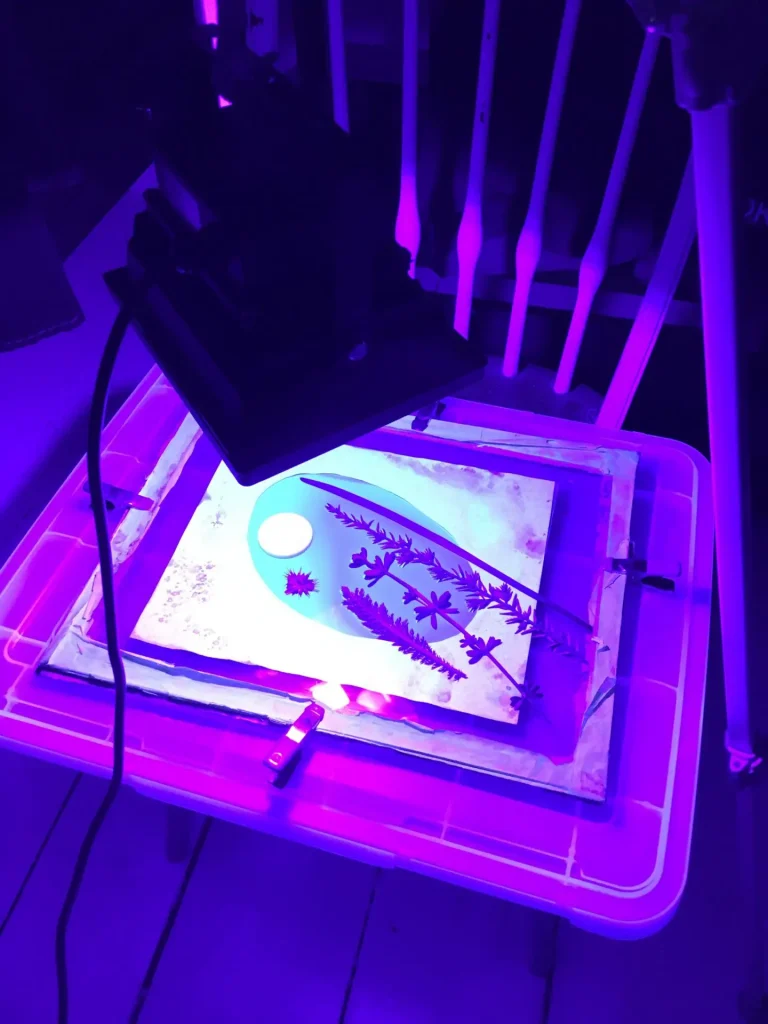
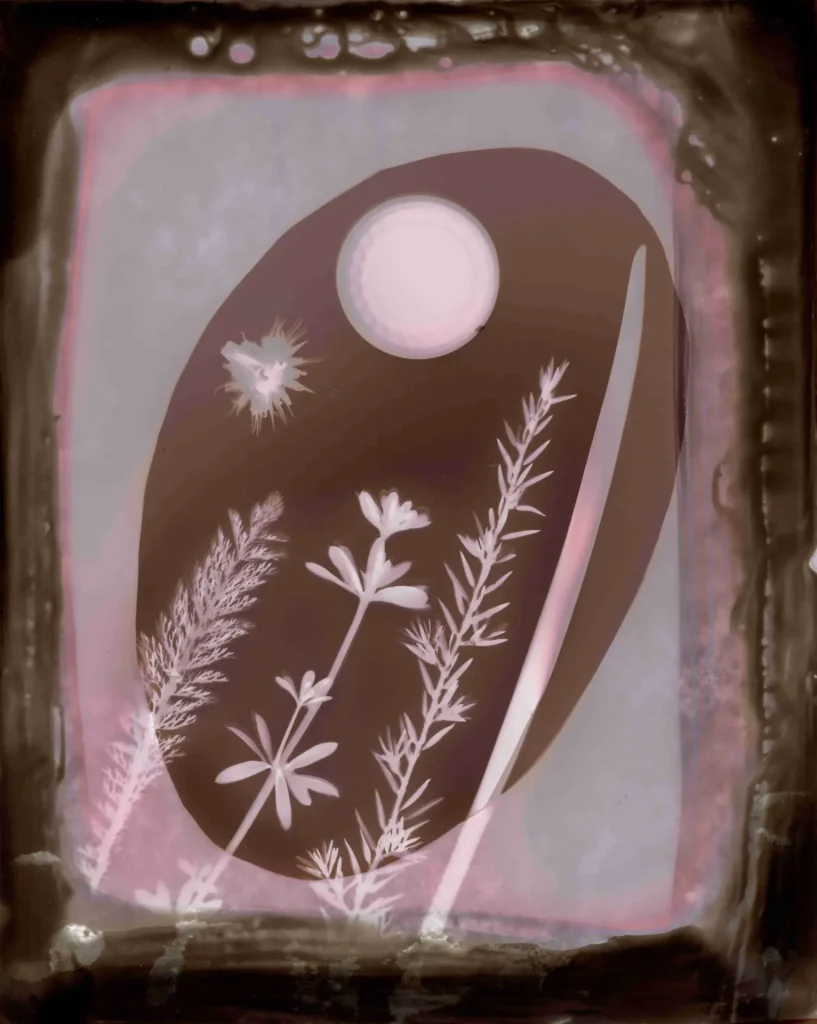
Links: Website
Vi Andare (Lisbon, Portugal)
I am a self-taught artist and photographer as a hobby.
I have a multidisciplinary background. Originally from Angola, I spent my childhood and adolescence in Luanda, witnessing the abrupt social changes of a new independent country in Africa. At the age of fifteen I moved to Portugal, where I’ve created my base in Lisbon (1992-2020). I took a degree in Interior Design, but soon I understood that my main interest was Urban Sociology. Therefore, after a few years back working in Angola, I moved to Latin America to do a PhD in Urban Planning.
Though I was always interested in photography, I only started to take pictures during the globetrotting years of places I crossed around the world. I went from indigenous peoples, rural landscapes to the most densely populated metropolis on earth, from favelas to hi-tech structures.
In 2018, I took a summer course called Alternative Dreams at Imagerie – Casa das Imagens, about alternative photographic processes. Since then, I have been making cyanotypes, cyanolumens, lumen photographs, pinhole images, chemigrams and salt prints. I take the images either with my Canon G7X or my mobile phone. Then I create the negatives by editing the images as required for the alternative processes I am using. I print the negatives in a graphic store for better quality. To expose the pictures or photograms, I either use direct sun for about 5–10 min, or a UV exposure unit for about 3–5 min depending on the subject.
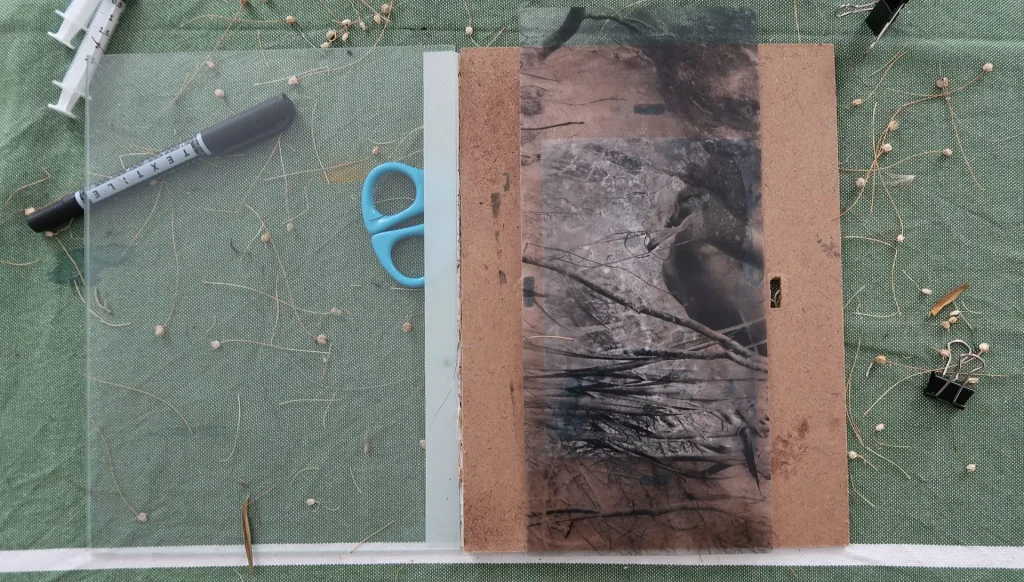
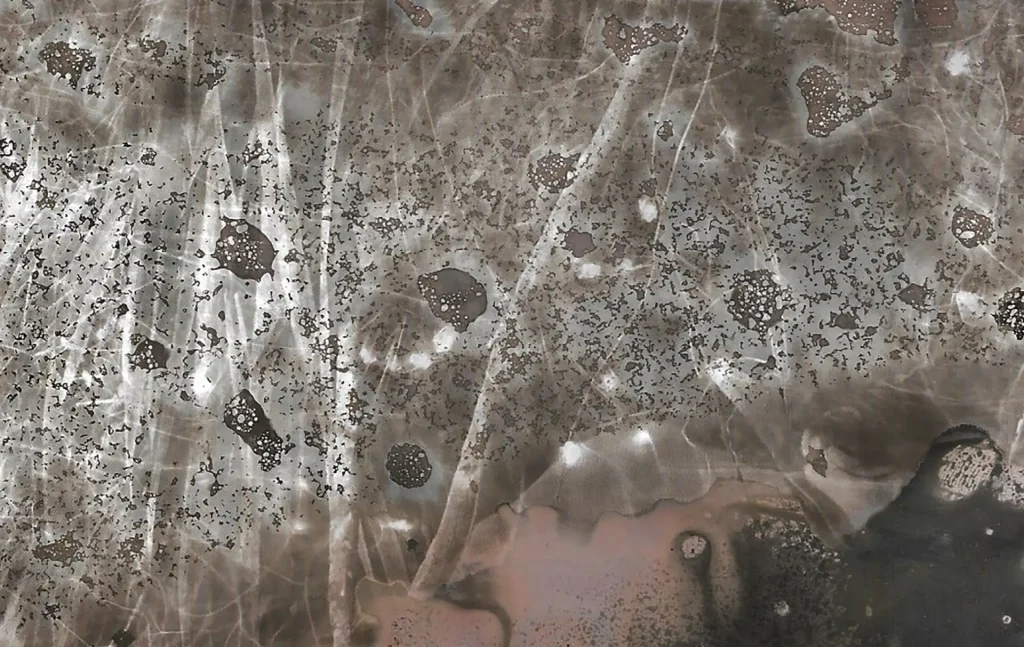
Hiatus is a liminal space, ambiguous, a gap, a passage between time or an open door, limbo, therefore a hidden and sacred place.
Open to all possibilities, it is simultaneously transhumance, a meeting place and of syncretic heterogeneity.
Time of analysis, time of longing to belonging, time of reunion.
Of desire, filled with a chrysalis patience.
The paper is Ilford Multigrade IV RC De Luxe Satin 10×15cm. First, I sprayed it with photographic fixer and let it dry a little. I then placed a negative, some palm roots and dried tree flowers (which you can see in the process photo) on the paper, and exposed it under a UV Exposure Unit for 12 mins. Finally, I exposed the paper and the negative for an additional 12 mins to make it more prominent.
Links: Facebook page
Sroyon Mukherjee (Kolkata, India)
I love traditional darkroom printing (I wrote a whole series about it for 35mmc) but I’d never tried alternative processes until I ran out of chemicals earlier this month. Sourcing fresh chemistry during the lockdown proved problematic, so I sought advice from my Alt Proc Facebook group, and was duly introduced to the wonderful world of lumen printing (which only needs photographic paper and optionally fixer) and anthotypes (prints from plant dyes, which need no special chemicals at all).
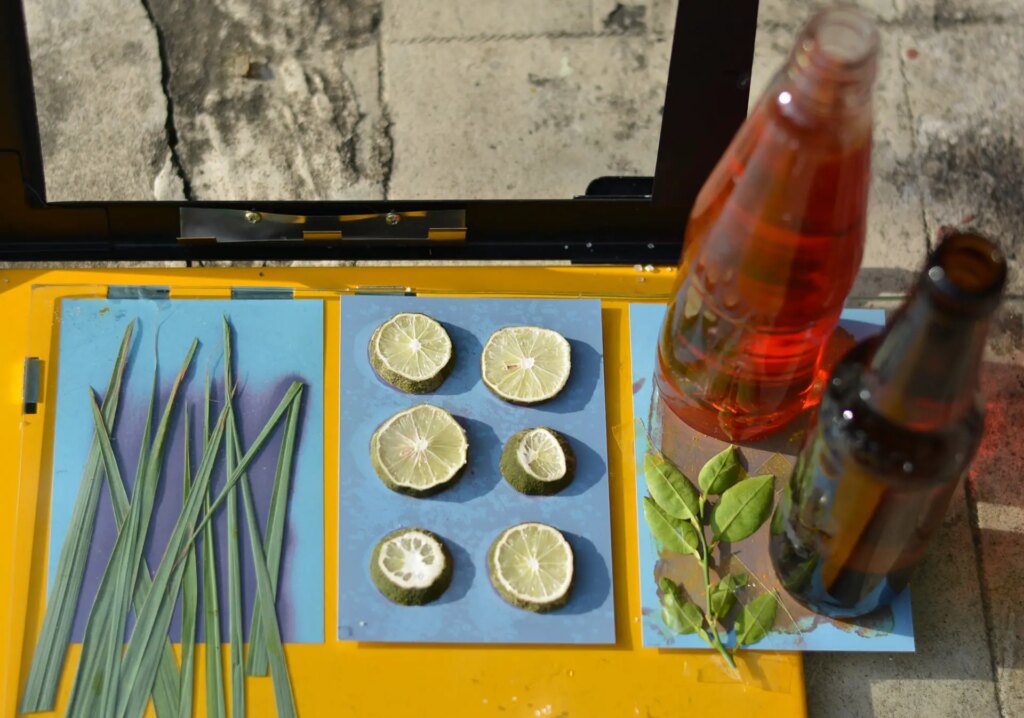
For my Lemonade Lumen triptych, I used Fomaspeed Variant 311 paper (4×6″), exposed for just 10 minutes under tropical afternoon sun. The left panel has lemongrass from my mum’s back garden. The halo around the leaves is from condensation (I placed the leaves under a glass pane to keep them flat).
The middle panel has lemon slices, around which I sprinkled sugar crystals for texture. Most objects show up as a lighter shape in lumen prints, but the lemon slices were rendered darker by the citric acid. I had not anticipated this effect, but I like it.
Prior to exposure, I “painted” the right panel with a solution of turmeric in nail-polish remover, to introduce an anthotype element and a touch of yellow to offset the blues. The “paint” turned purple where it was exposed to sunlight, while the unexposed parts remained yellow. I had not anticipated this effect either. To paraphrase Garry Winogrand, I lumen to find out what something will look like lumened.
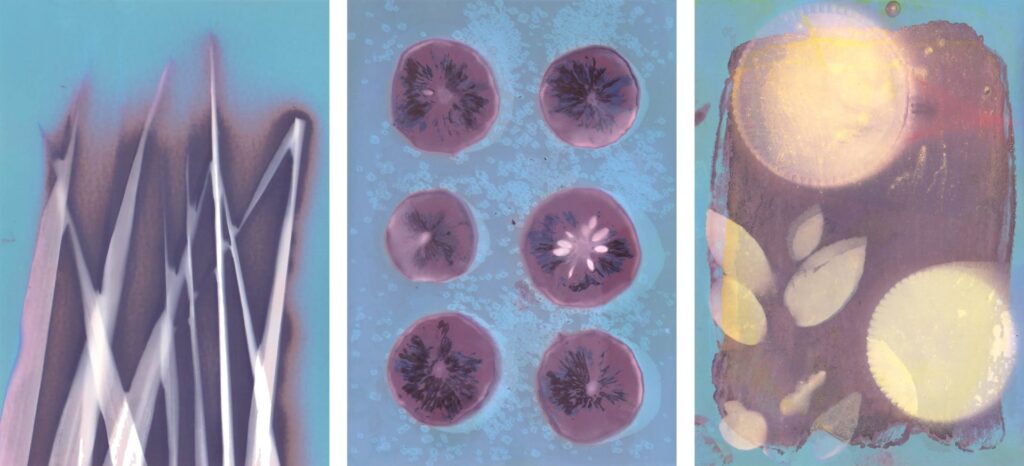
Links: Instagram
Jaime Aelavanthara (Lakeland, FL, USA)
I am an Assistant Professor of Art at the University of Tampa. In the classroom, I teach traditional black and white photography, digital photography, and alternative photographic processes.
I began alternative photo processes during my BFA from the University of Mississippi and worked in Cyanotype while earning my MFA in Photography from Louisiana Tech University. During COVID-19, I joined the ranks of educators across the world to revamp my darkroom courses to an online format at the University of Tampa. I began looking into processes that could be safely done from home, leading me to finally try Lumen Printing after years of admiring the process. I made this self portrait in my garden during the quarantine. Later, I converted the self portrait into a digital negative, and combined botanicals to create multiple versions, each with unique colorations and variations.
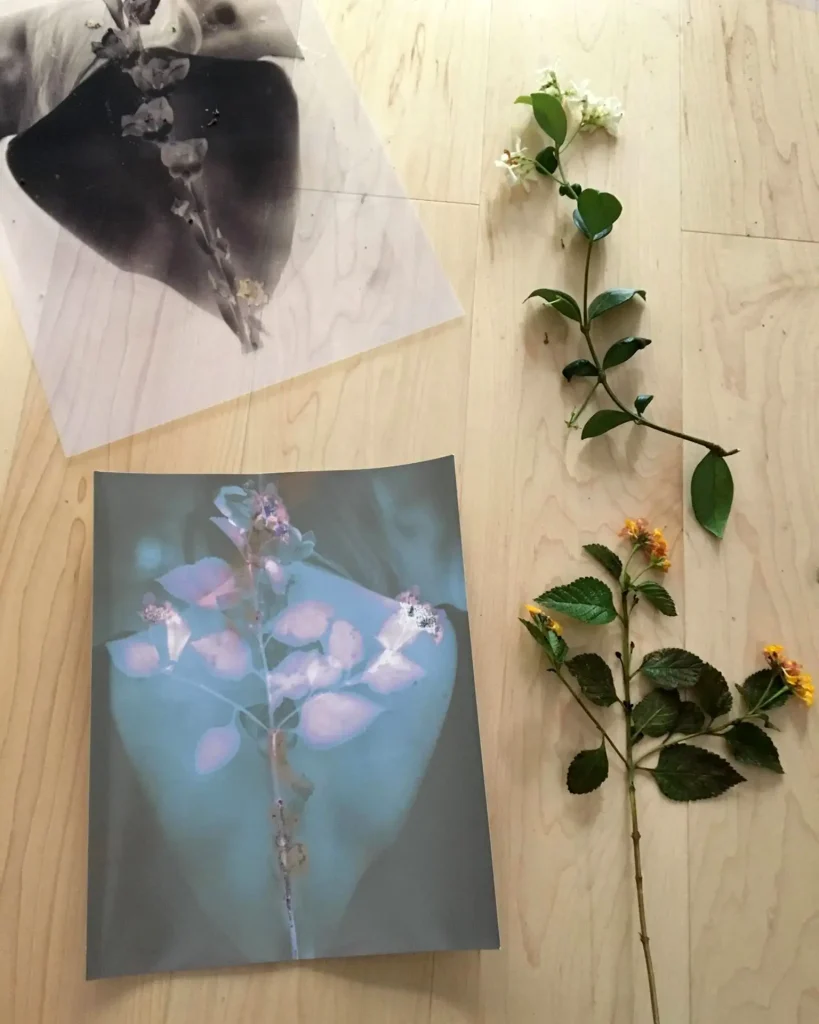
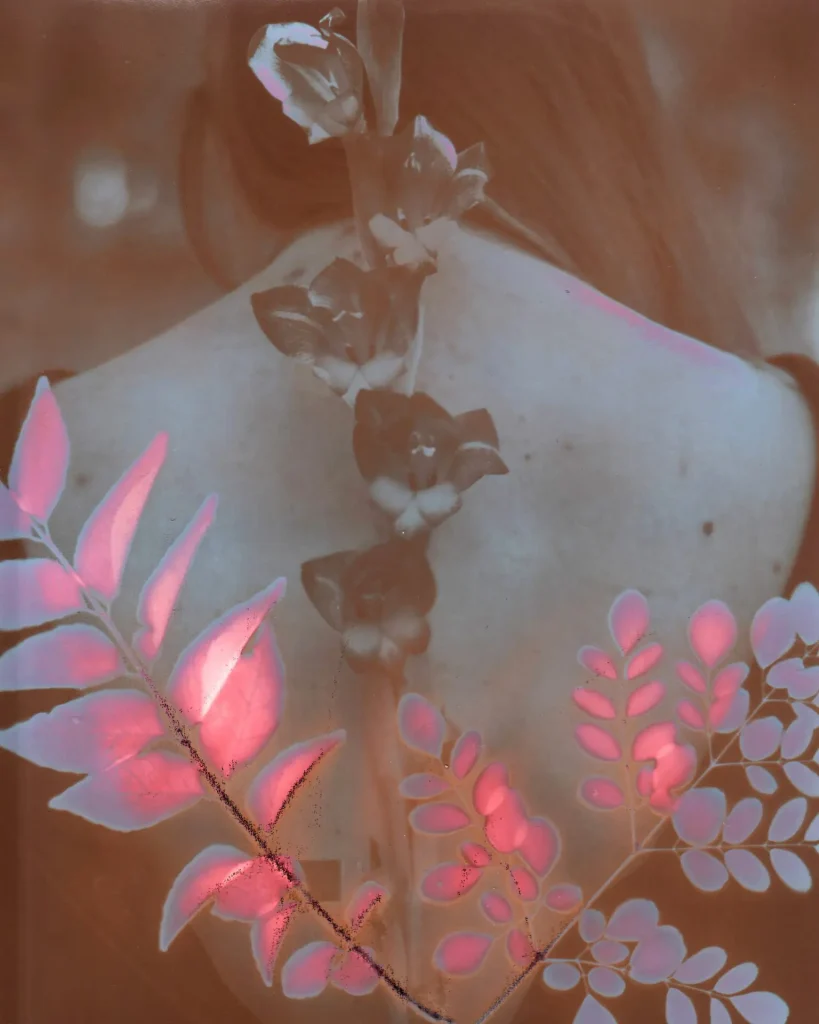
Links: Website | Instagram | Facebook page
Olga Suchanova (London, England)
I am a Slovakian born visual artist, living and working in London. My background is in the fields of art, science and technology.
During the lockdown in London, I stayed focused and continued working in isolation in my studio and at home. I decided to use lumen printing to document Spring in my garden. And because it’s dandelion time, I made a few lumen prints of dandelions.
In lumen printing, I like to experiment with organic material, inorganic material and digital technologies. I am mainly focused on experimenting, exploring and polishing various processes exploring the essence of photography and questioning the fundamentals and essence of being.
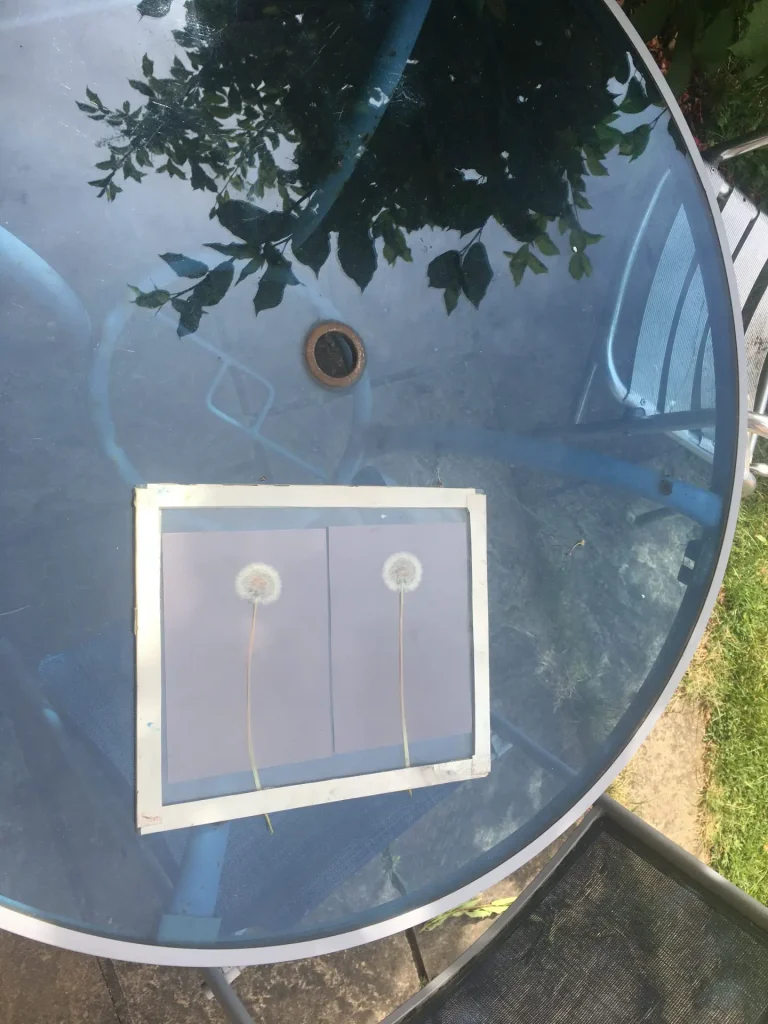
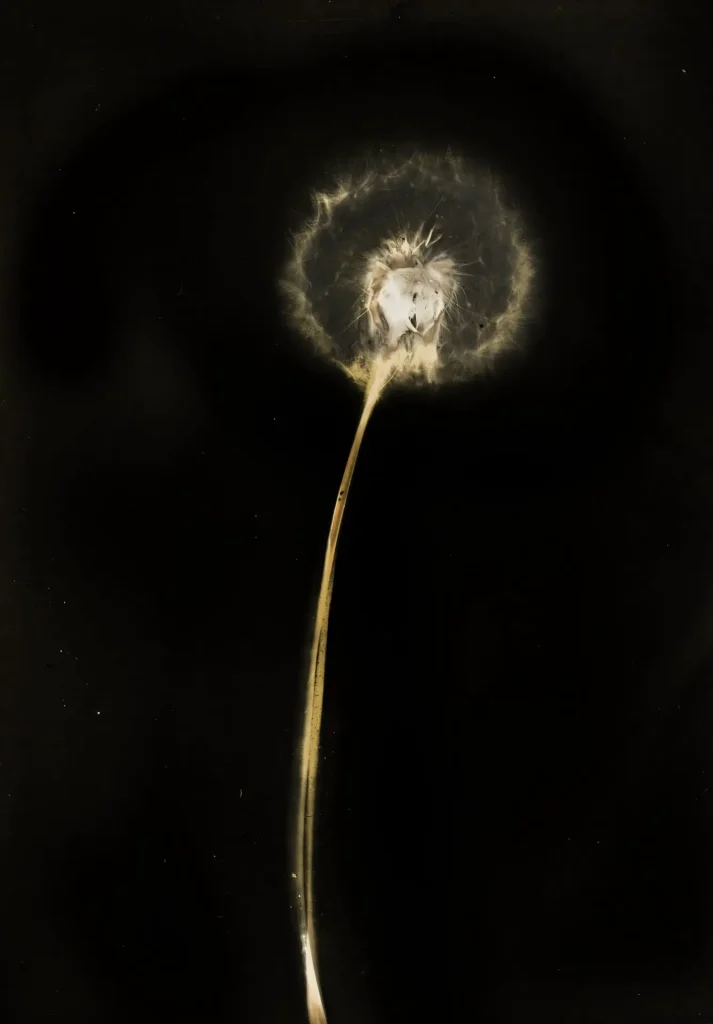
If this series makes you want to find out more or try your hand at lumen printing or other alternative processes, check out AlternativePhotography.com or its sister Facebook group where this project was born. Or post your alt proc questions in the comments section, and we’ll do our best to answer. Thanks for reading!
Share this post:
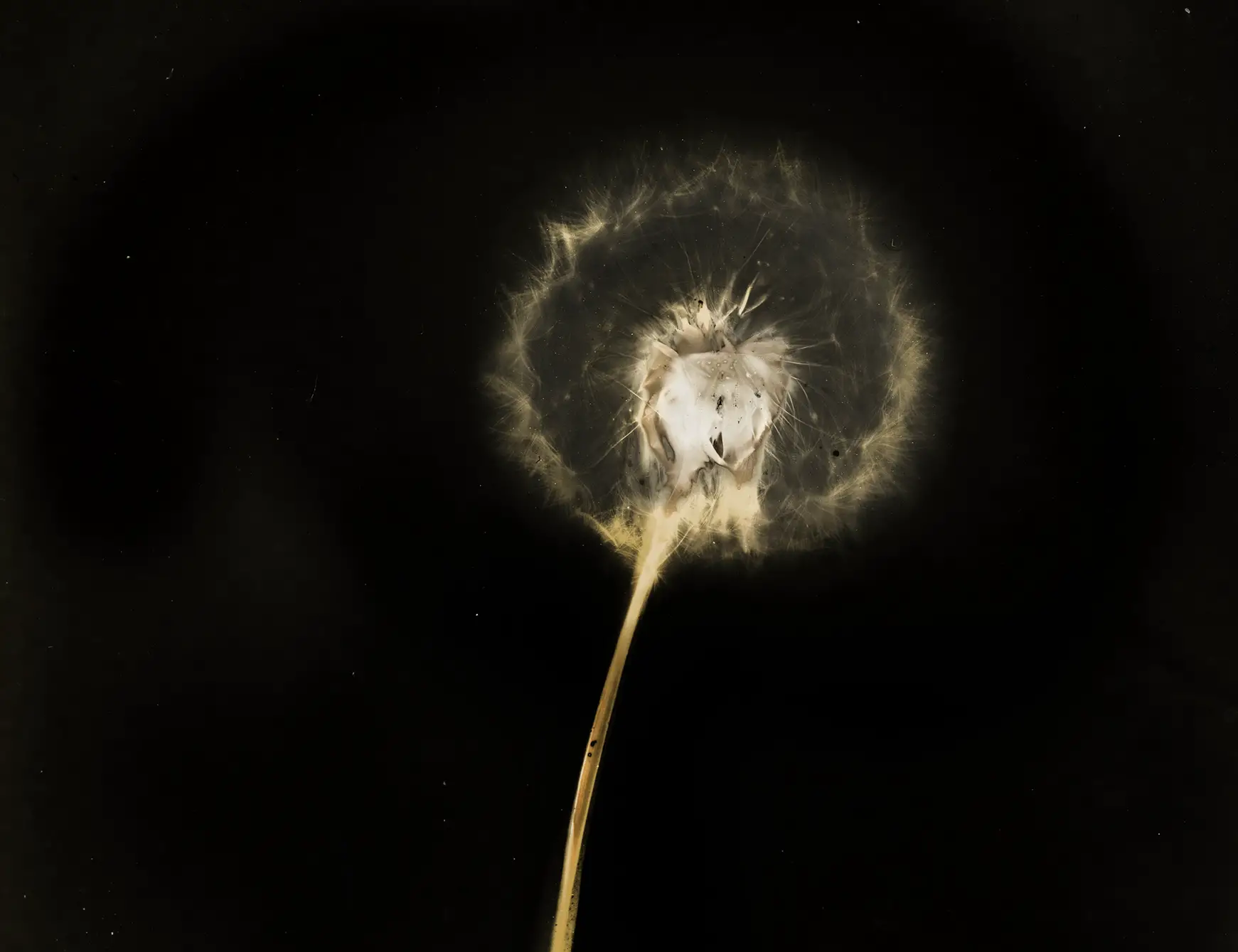








Comments
Stephen J on Lockdown Lumen Pt 2 – Artists around the World Printing with Sunlight
Comment posted: 01/06/2020
I have some old paper and a contact print press that I was given when I bought an enlarger (some extra bits were thrown in)...
I never used the enlarger, I have converted it to a copy stand, a work still in progress ;( and these bits have been laying around in boxes.
Absolutely fascinating the links are good too.
Many thanks.
Comment posted: 01/06/2020